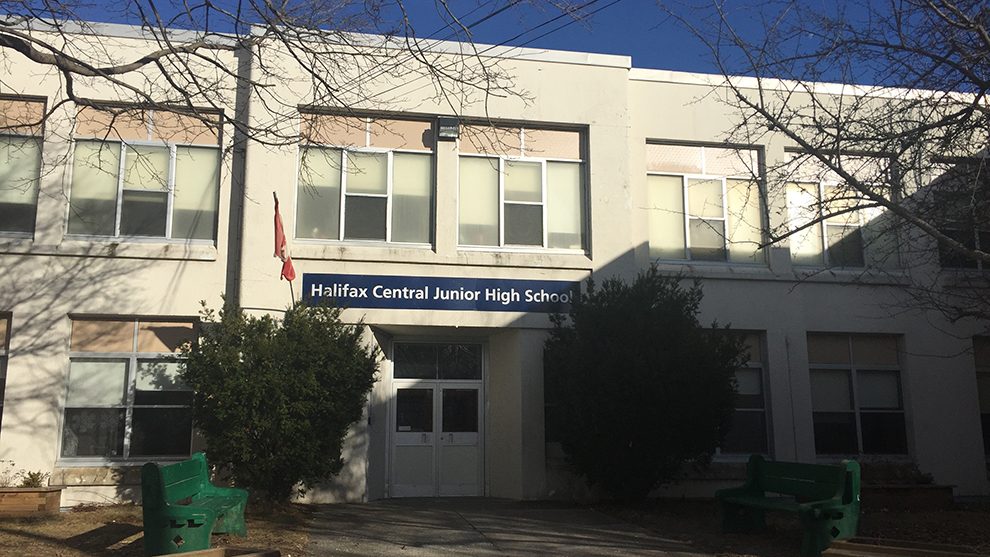Accessibility
‘They’re oblivious to it’: many HRM schools still not accessible
HRSB planning to install nine wheelchair lifts in seven schools by April

caption
Halifax Central Junior High is one of the seven schools set to become accessible.
caption
Halifax Central Junior High is one of the seven schools set to get a wheelchair lift.Seven Halifax Regional Municipality schools will receive wheelchair lifts in the next few months, but dozens remain inaccessible to children with mobility issues.
A tender listing on the Halifax Regional School Board’s website says the plan is to install nine inclined wheelchair lifts in seven multi-storey schools by March 31. The upper floors of these schools are currently inaccessible to people in wheelchairs.
“These schools were built when the code of the day did not require accessibility design elements, as they would be today,” Maria Cantagalli, administrative assistant of the operations department at the HRSB, said in an email to The Signal.
The seven schools were built between 1929 and 1979. Another 31 HRM schools — or 23 per cent — are inaccessible with no lifts or elevators. Related stories
Accessibility has been a problem in the HRSB for years, including when Letitia Hinkley-Roach’s son Peyton attended Beechville-Lakeside-Timberlea Junior Elementary.
Hinkley-Roach said the family lobbied for a lift. When the process took so long, they arranged to install a wheelchair lift and billed the HRSB for the work.
She said workers are often “oblivious” to the needs of those in wheelchairs.
“Until they have a child in there, they’re not going to know,” she said. “You can get architects and engineers, but unless you have someone sitting in a wheelchair, there’s no way you’re going to know.”
Peyton, now 13, currently attends Ridgecliff Middle School in Beechville, which is fully accessible.
Improving accessibility
Despite ongoing issues, the HRSB has upgraded several of the older schools in the last few years.
One of the goals in the HRSB’s business plan for this year is to “develop a strategy to improve accessibility in all schools.” These schools will then be compliant to current Nova Scotia building code regulations.
Newer schools are fully compliant, according to an update from September of the school board’s business plan. Out of the schools that need to be upgraded, 31 of the 38 have been audited and are being evaluated and prioritized for barrier-free accessibility.
This year, the HRSB is also working on upgrading accessibility in other areas by improving parking lots, installing pathways, ramps and upgrades to push button doors and visual aids.
‘A huge issue’
It’s not just people affected with the schools who are concerned.
“This is a huge issue that needs to be resolved,” Gerry Post, executive director of the Accessibility Directorate of Nova Scotia, said in an email to The Signal.
He noted that developing accessibility standards for education was a “huge priority” for the whole province. The government is working on a strategy, scheduled for release this fall, about making Nova Scotia fully accessible in all sectors by 2030.

